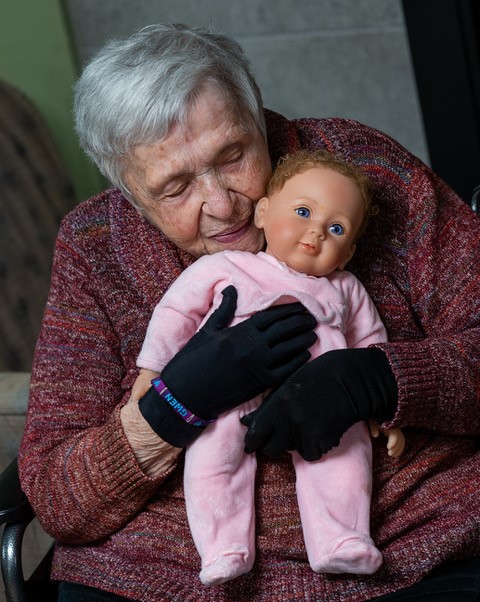Everyone needs a little comfort now and then.
That’s why many elements of our robust Life Enrichment program for residents in long-term care involve activities that evoke strong memories. Activities that residents in long-term care enjoyed in their lives previously—arranging flowers, painting, planting, cooking—all are strategically incorporated into our model program. Such activities are especially important for residents with dementia, or in the middle to late stages of Alzheimer’s.
To help elders who have a strong need to nurture, staff in Robison Jewish Health Center/Harold Schnitzer Center for Living often offer comfort objects like stuffed kittens and soft smiling baby dolls.
“For residents who are upset or wandering, the kitties and babies are what we call an intervention to soothe and comfort,” said Justine May, social service coordinator. “The look of relief on our residents’ faces when we offer the babies or kitties for comfort is noticeable.
“I think nurturing and mothering and loving is so natural that the babies and kitties help a lot of residents.”
Resident, Gwen, for example, had to leave her beloved cat behind when she moved to long-term care. “The companionship that she’d always had from her kitty at home made it a natural for her to love her stuffed kitty,” said Justine. Gwen used to take her kitty to activities; now she can often be found with her baby doll.
Comfort objects help residents communicate affection, and “give us another way to interact with residents,” said Justine. “The comfort objects are a topic of conversation we can use to elicit memories.
“We are happy the comfort objects are handy whenever residents need them.”



